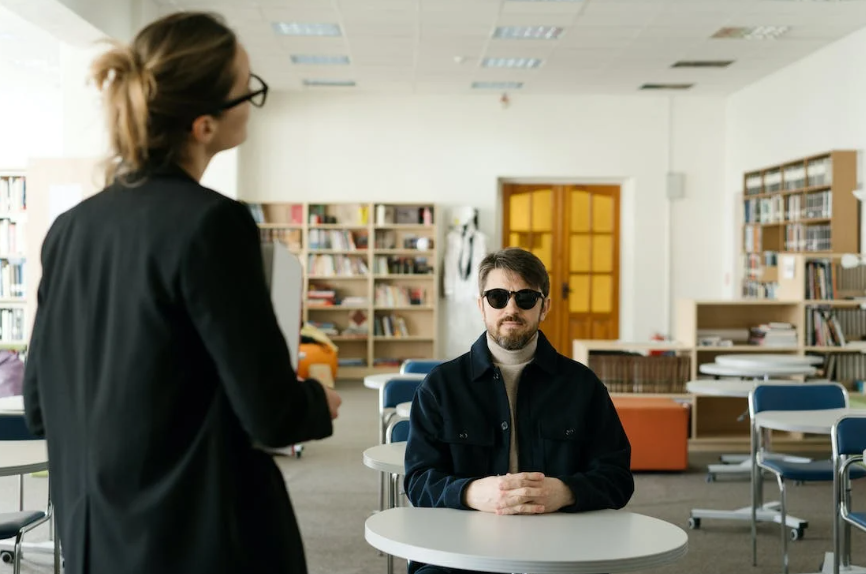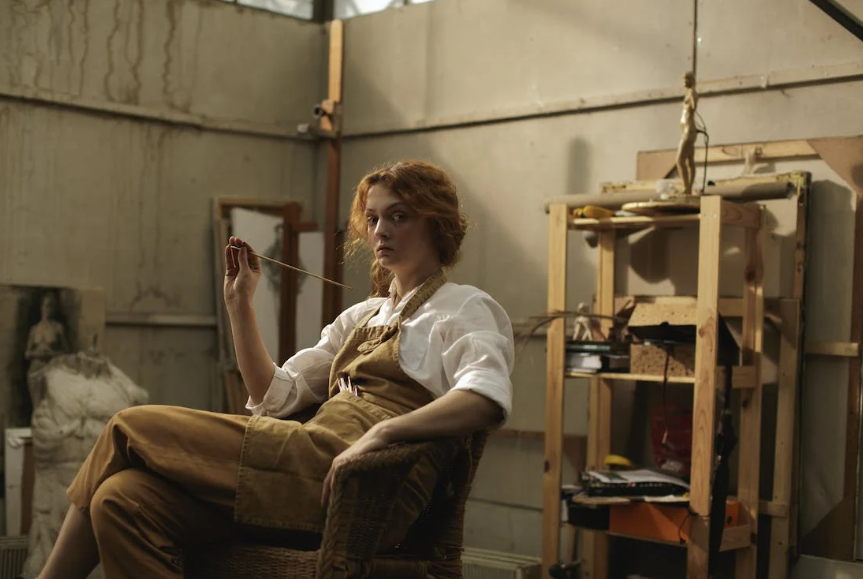Mindfulness Visualisation
This is a guided visualization for goal achievement, designed to be short and sharp so you can easily fit it into your morning routine before setting about your day.

Selfpause Affirmation App
Download the app to get 1,000’s of affirmation meditations and everything you need to write, record and listen to your own.
Mindfulness visualisation involves visualising an object or an action. It can be used as a strategy to achieve specific goals. The key to visualisation is to set goals in advance and to visualize them in detail. In this way, you can achieve your goal more efficiently and effectively. Visualisation can help you focus and stay on task.
Guided visualization

Guided mindfulness visualization is a type of meditation that uses your imagination to direct your thoughts to a specific goal. Practicing guided imagery helps you cultivate certain psychological states, such as radical acceptance or gratitude. This type of meditation may be especially useful if you are prone to anxiety. By focusing on one or two things you would like to achieve, guided visualization meditation may help you to overcome the anxiety and distress that you are experiencing.
There are many benefits of using guided visualization. These benefits include reducing anxiety, reducing stress, and improving mood. The process can be enhanced by using complementary tools like music, sound therapy, and nature. It can also be integrated into yoga or reiki sessions. A number of different methods exist, so you may want to experiment to find which one works best for you.
To practice guided imagery, sit comfortably and listen to an audio track or a voice. Listen to the words and images, and notice any tension in your body. Now imagine a light in the color of your inspiration touching any tense areas. Then, allow yourself to rest in the resulting calm.
Visualization relaxation is a powerful technique to relieve anxiety and improve concentration. You can even learn to do it at home using visualization scripts. These scripts provide instructions on how to relax and regain confidence. These scripts can be downloaded from websites like Inner Health Studio. If you are concerned about your ability to perform a certain task, visualizing your success in the task will help you relax and calm your mind. It can help you improve your memory, concentration, and confidence.
Guided visualization has been proven to improve your emotional well-being, regulate blood pressure, and increase immune cell activity. It is also helpful in managing eating disorders, post-traumatic stress disorder, and chronic pain. Many doctors recommend guided imagery exercises for patients. Patients who are scheduled for major surgeries often increase their chances of surviving by visualizing the procedure.
Guided imagery can also be used to help with learning and coping with stressful situations. This relaxation technique involves sitting quietly and picturing a relaxing environment.
Object-based meditation

Object-based meditation uses mindfulness visualisation to help you achieve a state of mental well-being. This technique is also known as guided imagery and has different traditions. Unlike the traditional techniques, this type of meditation does not involve perception-based research into body schema. In fact, the visualisation exercise teaches you to imagine an object without being distracted.
Mindfulness meditation has a long tradition in Eastern cultures, and is considered a component of Buddhism. Jon Kabat-Zinn introduced mindfulness meditation to the West, where it has been used with thousands of patients with a variety of conditions. It is backed by more than a hundred scientific papers, and has been shown to have positive effects on physical and mental health. One study found that people with HIV who underwent a month of mindfulness training had higher levels of natural killer cells than patients who had not received any mindfulness training.
Another benefit of meditation is its ability to reduce stress. Meditation helps to lower the amount of cortisol that the body produces, which decreases the risk of heart attacks. This is particularly important as stress can lead to heart failure, so the lower the stress level, the lower the risk of heart disease. In addition, the blood vessels become more relaxed, lowering the pressure on the heart.
Self-portrait
You can use a Self-portrait for mindfulness visualisation as an opportunity to reflect on internal events. It helps you create a calm state of mind and opens your mind to new possibilities. It is possible to upload a photograph of yourself and write a poem in the description. The combined image can then be saved as a JPEG or PDF. By combining your poem and image, you can achieve immense benefits. Taking time to create a Self-portrait can have a profound effect on your life.
To begin the process, choose a comfortable position and begin taking a slow breath. Once you are comfortable, begin the visualization. Imagine yourself in a tranquil and calming environment. Use your five senses to add more detail to the picture. You may want to choose a color to evoke a sense of peace and relaxation.
Goal-setting

Goal-setting can be a collaborative process. It involves identifying desired outcomes and re-visualising them. This technique can improve motivation and clarify what the goal really is. It also requires time to focus and reflect. If done right, goal-setting can result in the achievement of personal goals.
When practicing goal-setting with mindfulness visualisation, it is important to notice your environment and the people around you. You can also focus on a specific part of the body. By visualising the area, you can increase your chances of achieving your goal. As you do this, adjust your senses – sound, smell, sight, and touch – to see yourself at the desired location. Then, take note of the people, food, and other surroundings. You may also notice that a certain feeling or emotion relates to the goal.
Visualisation helps create new neural pathways in the brain, so it can be a powerful tool for setting goals. Visualisation also helps to check in with your progress and re-calibrate your journey. This is because visualisation works by using our imagination. We can use it to see our future selves, and feel ourselves achieving the desired outcome.
Goal-setting with mindfulness visualisation is a powerful tool to help you achieve your dreams. Using visualization can help you set your goals in a clearer way, and can help you see the steps required to achieve them. This can help you focus and reach your goals quickly and easily. Whether you’re setting a goal for personal development or to achieve a lifelong dream, visualization is a powerful tool for setting and achieving goals.
Creating and connecting with your vision is an essential step toward reaching your desired outcomes. This step is important in achieving your goals and building momentum for success. Your vision will serve as your starting point and guide throughout the journey. The next step is creating precise goals. There are many mistakes people make in setting goals.
There are many different types of goal-setting exercises. The best one for you depends on your group’s dynamics, demographics, and desired aims.
Our Top FAQ's
Mindfulness visualization is a meditation technique that involves using the power of imagination and visualization to focus the mind and achieve specific goals. It involves using visualization and other mindfulness techniques, such as focusing on the present moment and letting go of distracting thoughts, to bring the mind into a relaxed and receptive state. From this state, it is possible to visualize and focus on the desired outcome or goal, which can help to bring it closer to fruition.
Mindfulness visualization can be a powerful tool for setting and achieving goals because it allows you to focus your attention and energy on what you want to accomplish. By visualizing your goals and the steps needed to achieve them, you can create a clear roadmap for success. This can help to increase motivation and determination, as well as to identify any potential obstacles or challenges that may arise along the way.
Some tips for practicing mindfulness visualization effectively include:
- Finding a quiet, comfortable place where you can relax and focus.
- Taking a few deep breaths to calm the mind and body.
- Focusing on the present moment and letting go of distracting thoughts.
- Visualizing your goals in as much detail as possible, including the sights, sounds, and feelings associated with achieving them.
- Practicing regularly, perhaps a few times a week or more, to build the skill and see results.
One way to incorporate mindfulness visualization into your daily routine is to set aside a specific time each day to practice the technique. This could be first thing in the morning, before bed, or at any other time that works for you. Another option is to incorporate brief visualization exercises into your daily activities, such as taking a few minutes to visualize your goals during a break at work or while waiting for an appointment.
There are a few potential challenges or drawbacks to using mindfulness visualization to achieve goals, including:
- It may be difficult to quiet the mind and focus on the present moment at first, especially if you are new to mindfulness or visualization.
- It may take time and practice to develop the skill of visualization and see results.
- Some people may find it challenging to visualize their goals in a way that feels realistic or believable.
To overcome these challenges, it can be helpful to start with shorter visualization exercises and gradually increase the length as you become more comfortable. It can also be helpful to seek guidance from a qualified mindfulness or meditation teacher or to try different techniques and find what works best for you. Finally, remember that mindfulness visualization is just one tool among many that can help you achieve your goals, and it is important to be patient and kind to yourself as you learn and grow.
